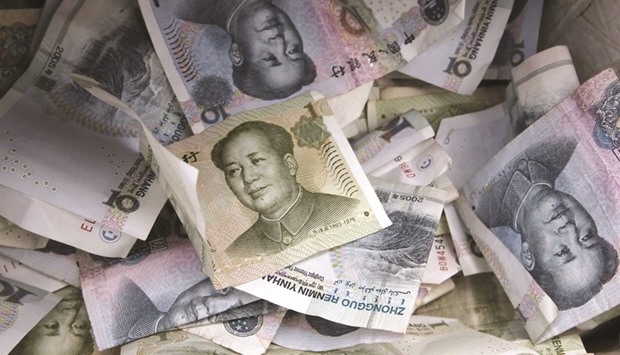Underground banks in China did more than 1tn yuan ($152bn) in transactions last year and the government will step up efforts to combat the problem this year, state media said yesterday citing the foreign exchange regulator.
China’s economic slowdown and market volatility have sparked a wave of capital outflows running into hundreds of billions this year, triggering alarms for China’s foreign exchange management system.
Zhang Shenghui, head of the State Administration of Foreign Exchange’s inspection division, told the official Xinhua news agency his department last year had participated in breaking up more than 60 underground banks suspected of doing more than 1tn yuan in transactions.
The regulator will also demand that above-board banks increase their oversight of any suspicious activities, and will also look more closely at securities, insurance and third-party payments providers, Zhang added.
Last year, Chinese police, the central bank and the foreign exchange regulator busted the country’s biggest-ever underground banking case involving transactions totalling $64bn.
Meanwhile, Chinese central bank governor Zhou Xiaochuan said in an interview carried in the Chinese financial magazine Caixin yesterday that there is no basis for the yuan to keep depreciating.
The yuan is basically stable against a basket of currencies and cross-border capital flows are in a normal range, Zhou said.
Chinese policymakers have tried to instil confidence among investors regarding their policy intentions by setting higher trading guidance on the Chinese yuan in the last couple of weeks.
Still, strategists in Reuters polls predict the yuan will fall to a multi-year low in the coming 12 months.
The yuan will slide to a multi-year low in the coming 12 months based on expectations of more monetary policy easing, continued outflows of capital and further pressure from a relatively strong dollar, according to a Reuters poll.
But the survey of over 50 currency strategists taken this week suggested a sharp depreciation of the yuan, at least by June, was unlikely.
“Our base case scenario is for a gradual and controlled depreciation in the yuan by end-2016,” said Jason Daw, head of Asian FX strategy at Societe Generale.
“We think the Chinese government can probably get capital outflows largely under control, which would then require less selling of foreign exchange reserves to manage the currency.”
The yuan, also known as the renminbi, has lost over 1% so far this year and is down almost 6% since early August, when the People’s Bank of China devalued it. Since then, the yuan’s fortunes have been among the main sources of financial market speculation and turmoil, compounded by growing concerns about the underlying health of China’s slowing economy.
While no one can predict with any real conviction what exactly Beijing’s next moves will be, foreign exchange experts both inside and outside China expect the yuan to weaken.
They forecast the yuan to trade around 6.60 a dollar by the end of February and then fall steadily to 6.72 by end-July and further to 6.80 by end-January next year.
Although that 12-month consensus is just about 4%t lower than Friday’s trading rate of 6.56, it is the weakest median since comparable polling on the currency began three years ago.
If the forecast is proved correct, it would mark the lowest level for the yuan since early September 2010.

China’s economic slowdown and market volatility have sparked a wave of capital outflows running into hundreds of billions this year, triggering alarms for China’s foreign exchange management system.


